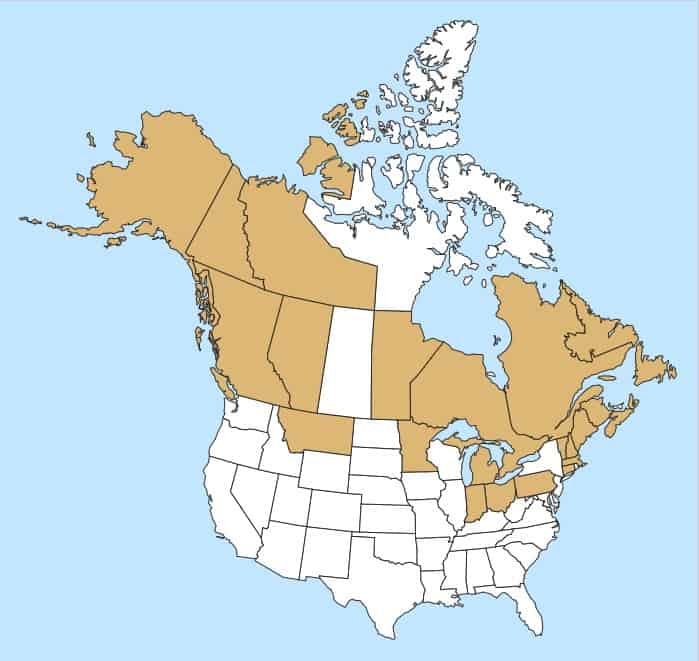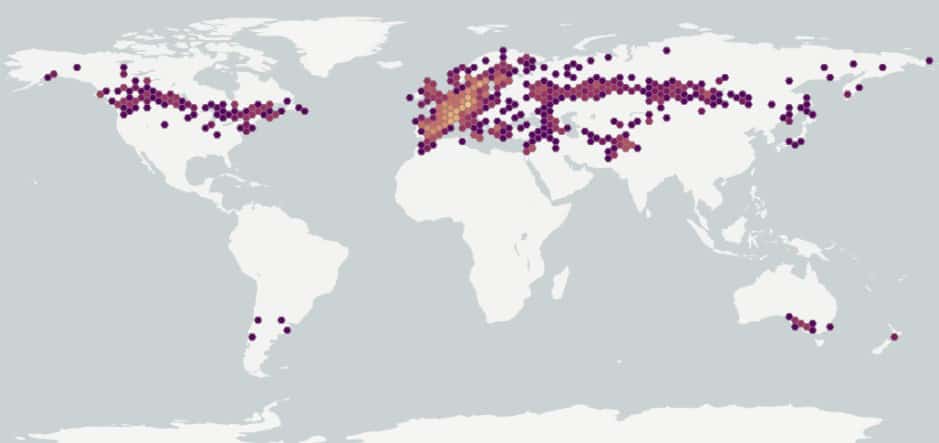Neslia paniculata
Explore More :
Explore plus :
Overview
Aperçu
Regulation :
Remarques Réglementation:
- Quarantine lists of countries e.g. Mexico *may be updated without notice
Regulation Notes:
On quarantine lists of countries e.g. Mexico*.
*Quarantine lists of countries may be updated without notice.
Distribution :
Répartition :
This species is native to central Eurasia and introduced in Australasia, northern Europe, and North and South America (Francis and Warwick 2003; USDA-ARS 2017). Present in scattered locations in the northern United States. (Francis and Warwick 2003; USDA-NRCS 2017).
Habitat and Crop Association :
Habitat et Cultures Associées :
This species occurs in cultivated fields, roadsides and a variety of other disturbed areas (Darbyshire 2003).
Economic Use, cultivation area, and Weed Association :
Utilisation économique, zone de culture et association de mauvaises herbes :
Duration of Life Cycle :
Durée du cycle vital:
Annual
Dispersal Unit Type :
Type d’unité de dispersion :
Single-seeded pod; does not split open at maturity
General Information
RENSEIGNEMENTS GÉNÉRAUX
Ball mustard is most abundant in the prairie provinces. It is present in relatively low frequencies in most crops but spreads as a seed contaminant; seed pods are difficult to separate from crops like canola and mustard. Occasional specimens may have four-sided or sharp-pointed pods (Francis and Warwick 2003).
.Identification
Identification
-
Pod
Size
- Pod length: 1.2 – 2.1 mm (average: 1.8 mm); width: 1.3- 1.8 mm (average: 1.6 mm)
Shape
- Pod is broadly oval to globose, compressed
- A thin style appendage often persists on the pod
Surface Texture
- The pod is strongly reticulate with thick ridges and small-bubbled interspaces
Colour
- The pod is light brown or medium brown
Other Features
- The pod of ball mustard is difficult to break open
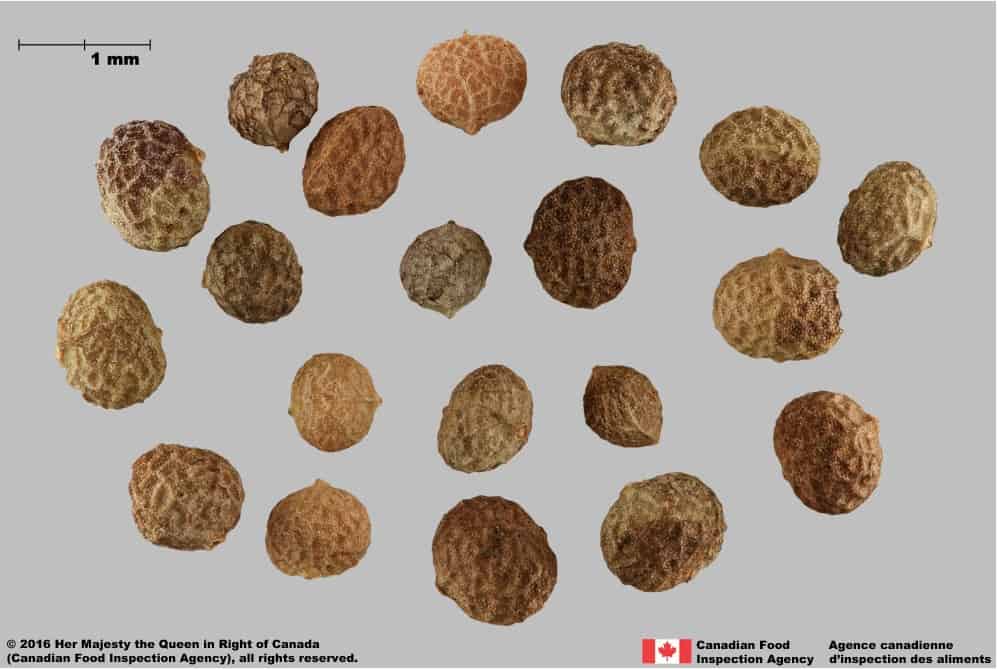
Ball mustard (Neslia paniculata) pods (single-seeded)

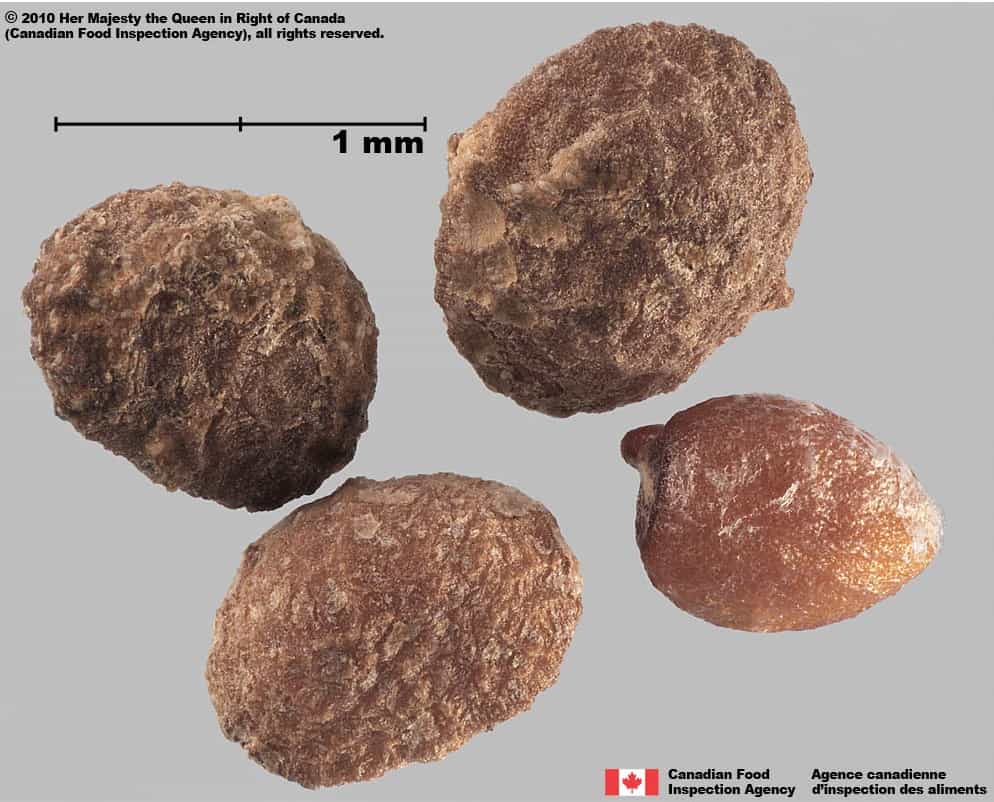
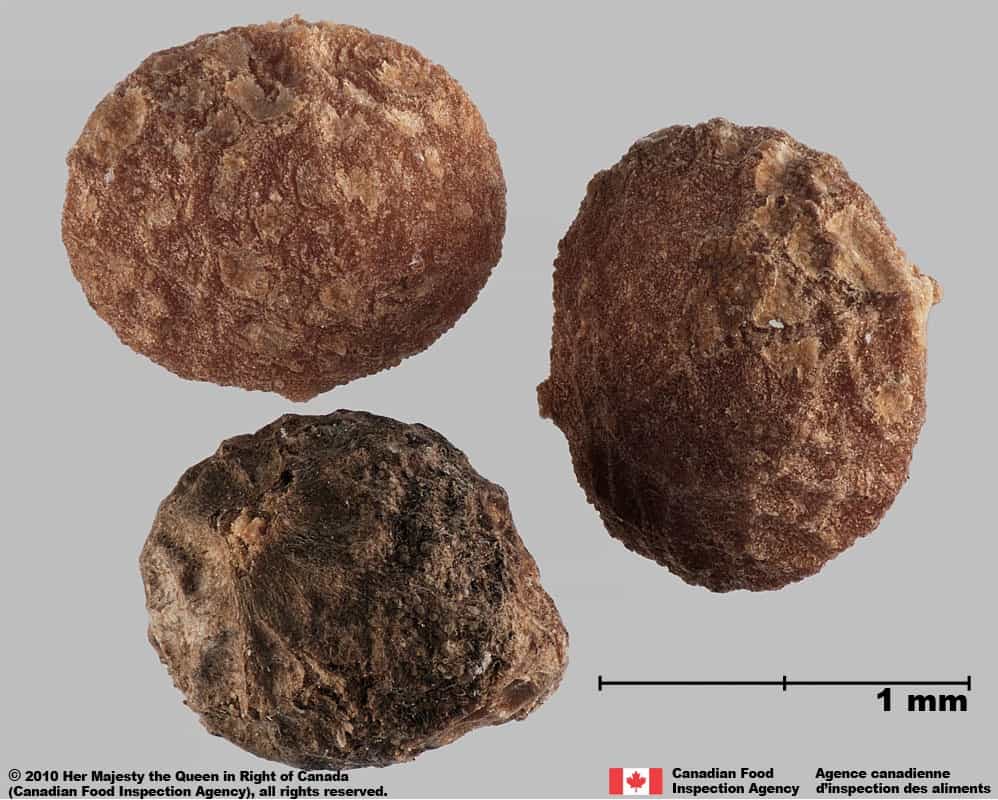
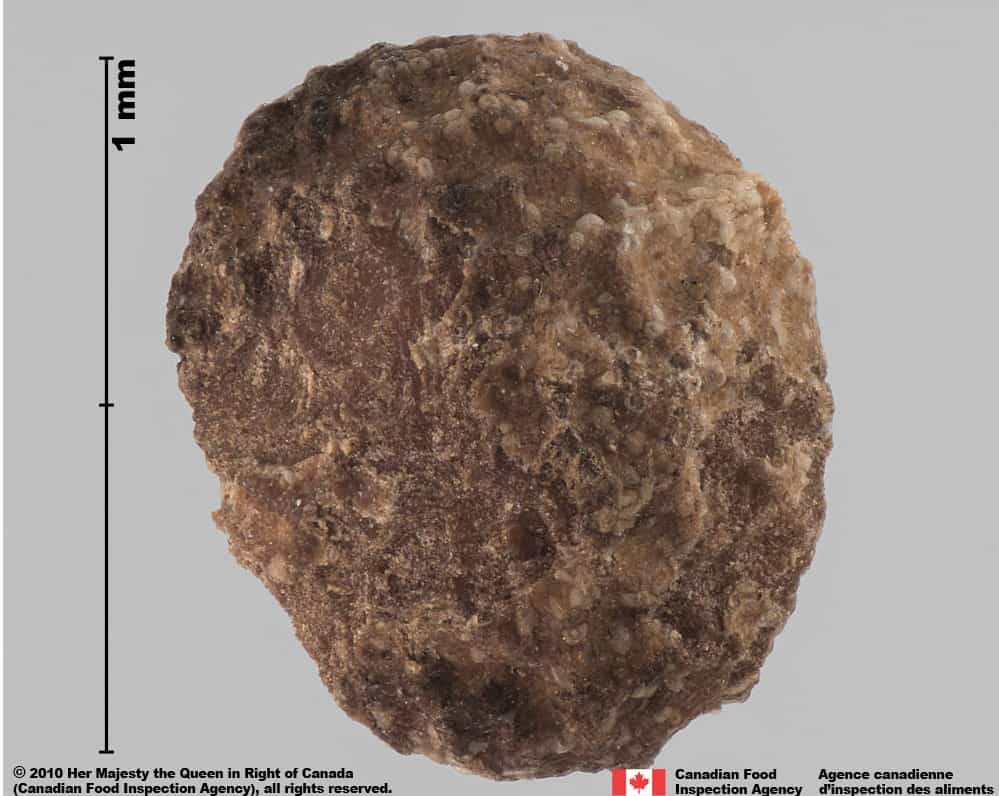
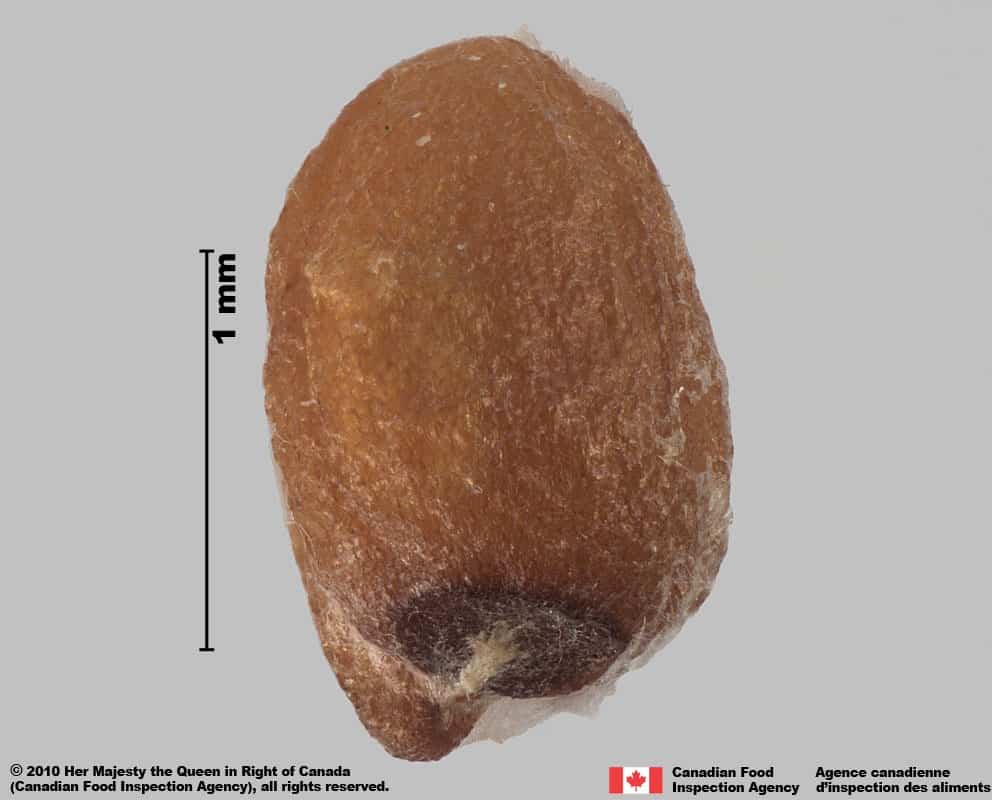
-
Seed
Colour
- Seed is orange-coloured, oily and fragile
- Hilum is dark brown with whitish tissue
Other Features
- The seeds are rarely seen outside the pod
Identification Tips
CONSEILS POUR L’IDENTIFICATION
Additional Botany Information
AUTRES RENSEIGNEMENTS BOTANIQUES
Similar Species
ESPÈCES SEMBLABLES
Similar species are based on a study of seed morphology of various species, and those with similar dispersal units are identified. The study is limited by physical specimen and literature availability at the time of examination, and possibly impacted by the subjectivity of the authors based on their knowledge and experience. Providing similar species information for seed identification is to make users aware of similarities that could possibly result in misidentification.
Calepina irregularis (white ball mustard)
Calepina irregularis pods are a similar single-seeded, brown colour, reticulated surface as ball mustard pods. The seed is also orange-coloured, oily and fragile.
Calepina irregularis pods are teardrop- shaped with an obvious style appendage and generally larger (average length: 2.8 mm; average width: 1.7 mm); the surface reticulations have wider interspaces.
Click to select species
Cliquez pour sélectionner les espèces
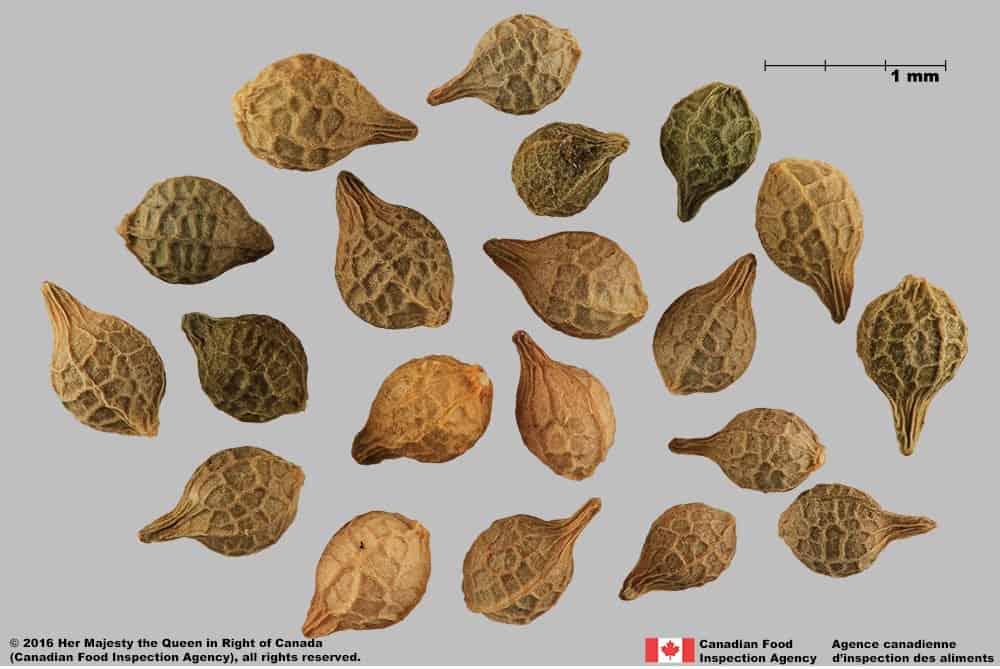
Calepina irregularis
Comparison Window
Fenêtre de comparaison
MAIN SPECIES
ESPÈCES PRINCIPALES
Neslia paniculata

Neslia paniculata
Brassicaceae
Ball mustard (Neslia paniculata) pods (single-seeded)
MAIN SPECIES
ESPÈCES PRINCIPALES
Neslia paniculata

Neslia paniculata
Brassicaceae
Neslia paniculata pods (single-seeded)
MAIN SPECIES
ESPÈCES PRINCIPALES
Neslia paniculata

Neslia paniculata
Brassicaceae
Neslia paniculata pod (single-seeded)
MAIN SPECIES
ESPÈCES PRINCIPALES
Neslia paniculata

Neslia paniculata
Brassicaceae
Ball mustard (Neslia paniculata) pods and seed
MAIN SPECIES
ESPÈCES PRINCIPALES
Neslia paniculata

Neslia paniculata
Brassicaceae
Ball mustard (Neslia paniculata) seed
SIMILAR SPECIES
ESPÈCES SEMBLABLES
Calepina irregularis

Calepina irregularis
Brassicaceae
Calepina irregularis pods (single seeded)
SIMILAR SPECIES
ESPÈCES SEMBLABLES
Calepina irregularis
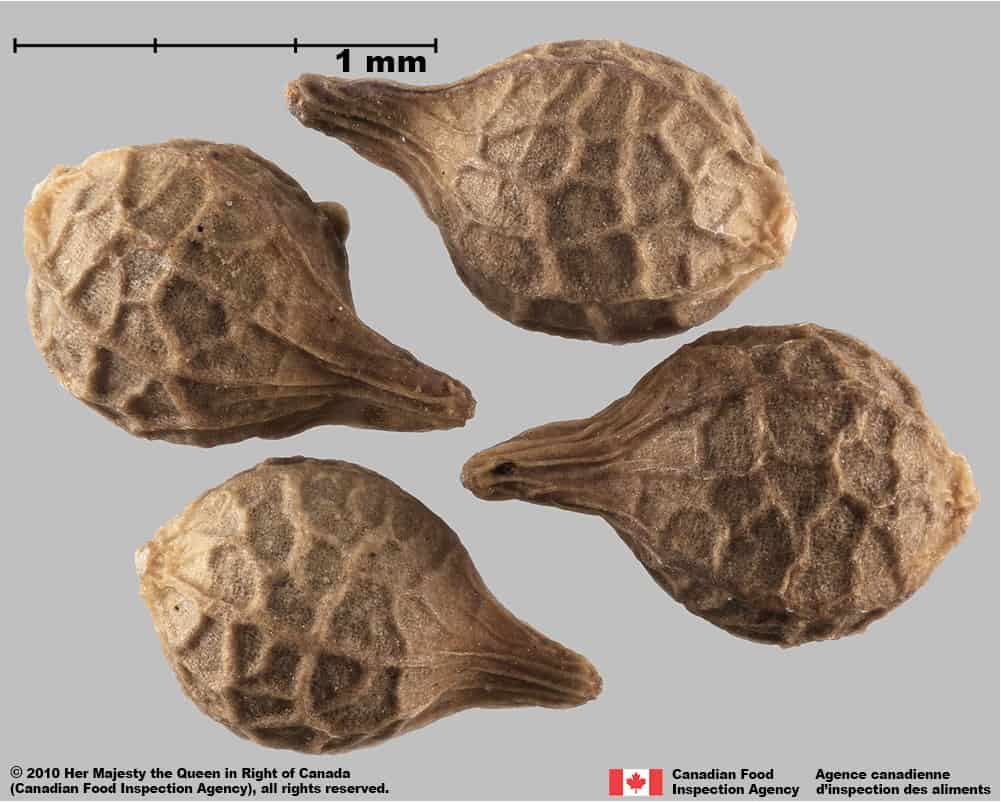
Calepina irregularis
Brassicaceae
Calepina irregularis pods (single seeded)
SIMILAR SPECIES
ESPÈCES SEMBLABLES
Calepina irregularis
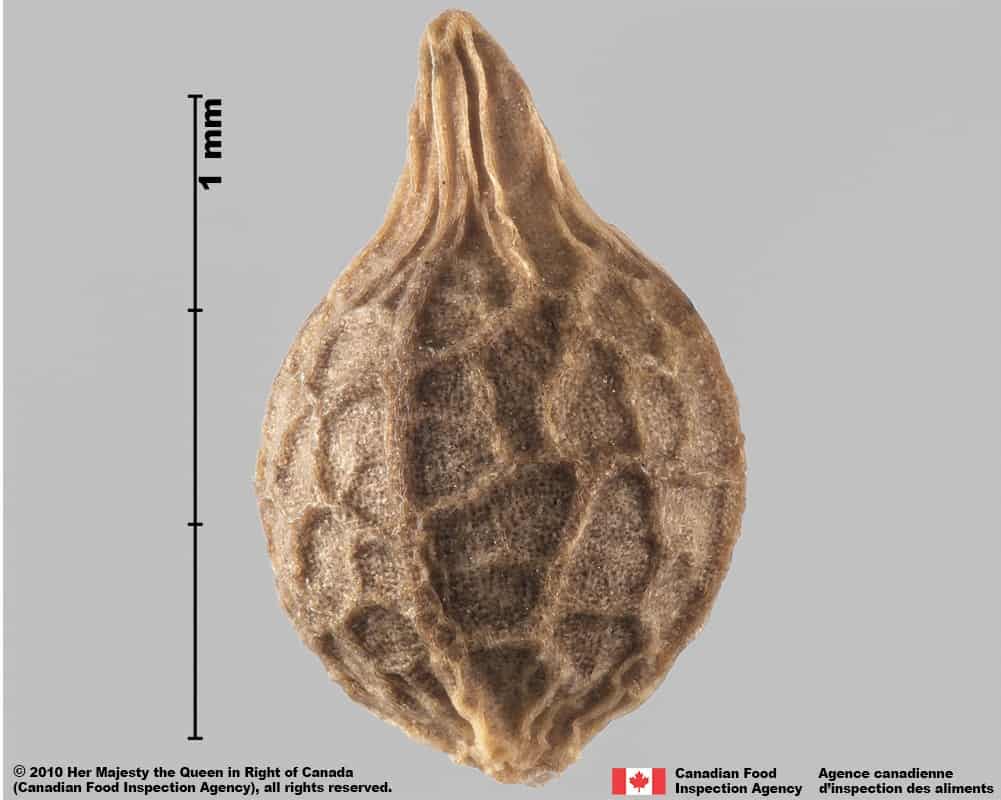
Calepina irregularis
Brassicaceae
Calepina irregularis pod (single seeded)
Need ID Help?
Besoin d’aide pour l’identification?
Reference(s)
Référence(s)
Darbyshire, S. J. 2003. Inventory of Canadian Agricultural Weeds. Agriculture and Agri-Food Canada, Research Branch. Ottawa, ON.
Flora of North America (FNA) Editorial Committee, eds. 1993+. Flora of North America North of Mexico [Online]. 22+ vols. New York and Oxford. Accessed December 29, 2022.
Francis, A. and Warwick, S. I. 2003. The biology of Canadian weeds. 120. Neslia paniculata (L.) Desv. Canadian Journal of Plant Science 83: 441–451.
Global Biodiversity Information Facility (GBIF) Secretariat. 2022. https://doi.org/10.15468/39omei Accessed via https://www.gbif.org/species/9040863 Accessed December 29, 2022.
U.S. Department of Agriculture-Agricultural Research Services (USDA-ARS). 2017. Germplasm Resources Information Network (GRIN), https://npgsweb.ars-grin.gov/gringlobal/taxon/taxonomysearch Accessed April 25, 2017.
U.S. Department of Agriculture-Natural Resources Conservation Service (USDA-NRCS). 2017. The PLANTS Database. National Plant Data Team, Greensboro, NC USA. https://plants.usda.gov/home Accessed April 25, 2017.



